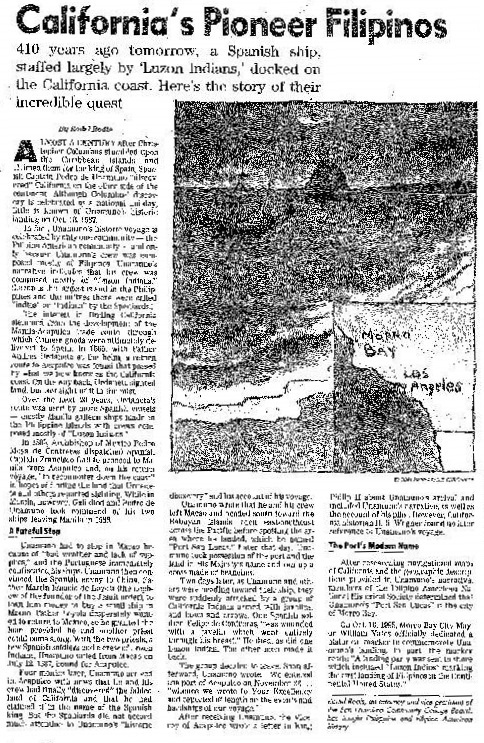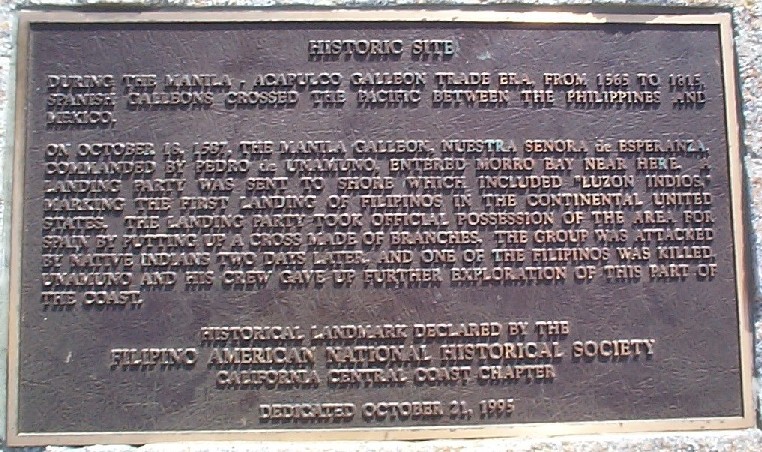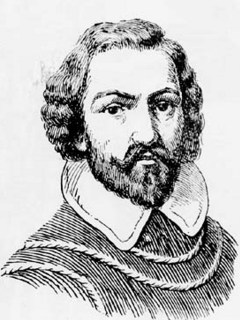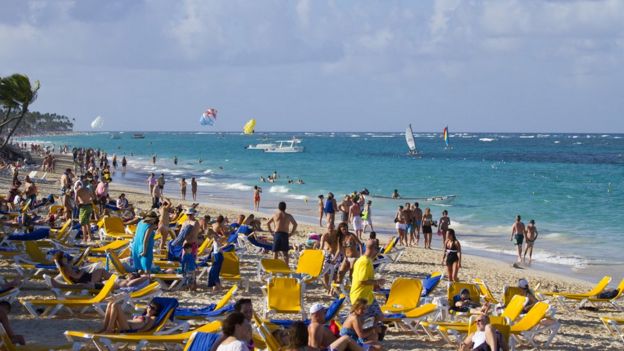
On September 25, 2009, the state of California officially declared October as “Filipino American History Month” to honor the first Filipinos to set foot in California 426 years ago this week. Starting in January of 2014, thanks to a law authored by Assemblyman Rob Bonta, the first Filipino American elected to the State Legislature, California’s school children will learn more about Filipino American history.
After learning about Filipino American history in California, people may conclude that Filipinos “discovered” California, which would be true but only in the same Eurocentric sense that Christopher Columbus “discovered” America in 1492 and Ferdinand Magellan “discovered” the Philippines in 1521.
Unamuno’s unrecognized discovery
Almost a century after Columbus discovered the Bahamas Islands (which he thought was India) and claimed this “New World” for the king of Spain, Spanish Captain Pedro De Unamuno “discovered” California on the other side of that American continent while on a voyage from Manila to Acapulco.
Although Columbus’ discovery is celebrated this October 14 as a national holiday in the United States, which Native Americans celebrate as “Indigenous Peoples’ Day”, no such honor is accorded Unamuno for his “discovery” of California on October 18, 1587.
In fact, his discovery is not even recognized by Spain and is only commemorated by the Filipino American community because Unamuno reported in his ship’s logs that his deck crew was composed of “Luzones Indios”.
Unamuno’s unrecognized discovery
Almost a century after Columbus discovered the Bahamas Islands (which he thought was India) and claimed this “New World” for the king of Spain, Spanish Captain Pedro De Unamuno “discovered” California on the other side of that American continent while on a voyage from Manila to Acapulco.
Although Columbus’ discovery is celebrated this October 14 as a national holiday in the United States, which Native Americans celebrate as “Indigenous Peoples’ Day”, no such honor is accorded Unamuno for his “discovery” of California on October 18, 1587.
In fact, his discovery is not even recognized by Spain and is only commemorated by the Filipino American community because Unamuno reported in his ship’s logs that his deck crew was composed of “Luzones Indios”.
Manila-Acapulco galleon trade
Unamuno’s discovery of California was an offshoot of the Spanish colonization of the Philippines in 1565 by Miguel Lopez de Legaspi who sailed to Manila from Acapulco, Mexico in November of 1564. Assisting Legaspi in his two month long voyage was his chief navigator, Fr. Andres de Urdaneta.
ADVERTISEMENT
While Legaspi stayed in the islands that were named “Las Islas Filipinas” after the king of Spain, Fr. Urdaneta returned back to Acapulco. Just as he was nearing Mexico, Fr. Urdaneta sighted land that was not found in any of his charts. As he sought to find this land, he lost track of it in the mist and so continued on to Acapulco where he reported what he saw.
Over the next 20 years, Fr. Urdaneta’s route from Manila to Acapulco was followed by Spanish galleon ships many of which were made in the Philippine islands and staffed with a crew of conscripted “Luzones Indios”. The main island of the new Spanish colony was Luzones (later shortened to Luzon) and all the natives therein were “Indios” as they were generically called in all Spanish colonies (because Columbus thought he discovered India).
These “Luzones Indios” would later be called “Filipinos” so that is how I will refer to them below.
In 1585, Archbishop of Mexico Pedro Moya De Contreras instructed Spanish Captain Francisco Gali, who was traveling to Manila from Acapulco as part of the Manila-Acapulco Galleon Trade, that on his way back, he was “to reconnoiter down the coast” to find the land that Fr. Urdaneta reported sighting.
No detour to China
Archbishop Contreras specifically instructed Gali not to stop by China, mindful of the intense interest by Acapulco merchants in establishing direct commercial trade and commerce with China instead of having to go through the Spanish merchants in Manila.
Unbeknownst to Gali, the Acapulco merchants had given money to Gali’s second in command, Pedro De Unamuno, to go to China. Fortuitously for the merchants, Gali died while in Manila, leaving command of his two ships to Capt. Unamuno.
Before leaving Manila with two galleon ships and a crew of Spanish soldiers and Filipino deck hands, Unamuno was warned by the Manila authorities not to detour to China as they heard rumors that the Acapulco merchants wanted to bypass Manila and acquire their Chinese goods directly from China.
Once Unamuno left Manila, however, he set sail for China. He would later claim in his defense that his diversion to China was accidental and due to “bad weather and lack of supplies”.
When Unamuno landed in Macao, China, the Portuguese authorities there seized his ships as they viewed direct Spanish trade with China as inimical to their own trade interests. After they reported his China incursion to the Spanish authorities in Manila, the governing Royal Audiencia dispatched Captain Juan De Argumedo to Macao to arrest Unamuno and to recover the two Spanish ships. The announced penalty for Unamuno’s insubordination was death.
But Unamuno and his men were able to elude capture and managed to connect with two Franciscan priests in Macao who wanted to return to Mexico. One of the priests, Father Martin Ignacio De Loyola (the nephew of the founder of the Jesuit order), loaned Unamuno the funds to purchase a small Portuguese-built ship in Macao. Unamuno christened his new ship “Nuestra Senora de Buena Esperanza” (Our Lady of Good Hope).
With his new ship loaded with Chinese goods purchased with whatever remained of the funds provided by the Acapulco merchants and with his crew of Spanish soldiers, Filipinos and two priests, Unamuno sailed for Acapulco from Macao on July 12, 1587.
Puerto San Lucas
Unamuno crossed the turbulent Pacific Ocean safely after two months but, as he neared Mexico, the mast of his ship broke, compelling him to seek the nearest land to dock to replace the broken mast and to replenish his food supplies. When his crew sighted land on October 18, 1587, Unamuno sailed into the bay of what he called “Puerto San Lucas” which he took possession of in the name of the Spanish king.
Unamuno wrote in his logs that he sent two groups of men to explore the land, one group of 12 soldiers which he personally led, and another group of Filipinos (“Luzones Indios”) led by Fr. Loyola, who carried a cross while the Filipinos were armed with swords and shields.
While reconnoitering the new land, the Filipinos encountered a group of five males, two females, and two babies who would all later be called “California Indios”. Fr. Loyola wanted to speak with them but they scampered away. Fr. Loyola and his Filipinos then returned back to the Esperanza.
First Filipino to die in California
The following day, October 19, Unamuno ventured on shore again with 12 Spanish soldiers, 8 Filipinos and Fr. Francisco De Noguera. Two of the Filipinos, who were sent ahead by Unamuno to scout the terrain, discovered a camp with 17 dugouts of varying sizes that had apparently just been abandoned by the natives who were eager to avoid contact. After failing to make contact with any of the natives, Unamuno and his crew then camped out.
While Unamuno and his crew were exploring the land, Fr. Loyola and another crew of Filipinos went ashore to gather wood and fresh water for the ship and to wash their clothes at a nearby creek. As they were doing so, a group of 23 natives approached them to ask them what they were doing. As there was a language problem, they could not understand each other. The local natives then grabbed the clothes the Filipinos were washing along with their water canteens. When they attempted to capture Fr. Loyola, gun shots fired from the ship forced the natives to withdraw.
Unamuno and his men were returning back to their ship on October 20 when they spotted two Filipinos running down a hill away from pursuing natives. Unamuno’s soldiers went up the hill to defend the Filipinos and repulse the attackers. Three of his soldiers were wounded including one fatally. Unamuno reported in his log that one Filipino (“Luzones Indio”), who was fleeing back to the ship, was killed by “a javelin which he failed to ward off with his shield”.
After a prolonged battle with the local natives, Unamuno and his remaining crew returned to the Esperanza and decided to continue their voyage to Acapulco on October 21.
When he reached Acapulco, Unamuno wrote a letter to the Spanish king: “We entered the port of Acapulco on November 22 whence we wrote to Your Excellency and reported at length on the events and hardships of our voyage.”
The Spanish authorities chose not to announce Unamuno’s discovery and little is known of what happened to Unamuno and the Filipinos who served with him. What is known is that a large Filipino community emerged in Acapulco composed of conscripted Filipinos who feared a return trip to Manila after experiencing the harrowing two month long turbulent voyage through the Pacific Ocean to get to Acapulco.
FANHS honors first landing of Filipinos
More than 400 years later, after learning of Unamuno’s historic voyage and after researching the navigational maps of California and the geographic descriptions provided in Unamuno’s narrative, members of the Filipino American National Historical Society (FANHS) determined that Unamuno’s “Puerto San Lucas” is the contemporary city of Morro Bay. (The nearby land scouted by the “Luzones Indios” is what is now San Luis Obispo].
After a year of planning and fund raising activities, FANHS set a date to dedicate a national historical marker to commemorate the landing of the Spanish galleon Nuestra Señora de Buena Esperanza in Morro Bay.
California Governor Pete Wilson sent a letter of congratulations to FANHS: “It is my sincere pleasure to join Filipino Americans from all across the nation in celebrating the dedication of the Morro Bay monument, commemorating the first documented Filipino presence in the Continental United States. The landing party took official possession of the area for Spain”
On October 21, 1995, Morro Bay City Mayor William Yates officially dedicated a historical marker to commemorate Unamuno’s landing. In part, the marker reads: “A landing party was sent to shore which included ‘Luzon Indios’ marking the first landing of Filipinos in the Continental United States. The landing party took possession of the area for Spain by putting up a cross made of branches. The group was attacked by Native Indians two days later and one of the Filipinos was killed. Unamuno and his crew gave up further exploration of this part of the coast.”

US Congress honors Filipino contributions to US
After California officially declared October as Filipino American History Month in 2009, the US House of Representatives on September 29, 2010 and the US Senate on October 5, 2011 passed concurrent House Resolution 780 and Senate Resolution 298 which read in part:
“Whereas the earliest documented Filipino presence in the continental United States was on October 18, 1587, when the first “Luzones Indios” set foot in Morro Bay, CA, on board the Manila-built galleon ship Nuestra Senora de Esperanza;”
“Whereas Filipino Americans have contributed greatly to the fine arts, music, dance, literature, business, journalism, education, science, technology, government, politics, fashion, and other fields in the United States that enrich the landscape of the country;
“Whereas efforts should continue to promote the study of Filipino American history and culture, as mandated in the mission statement of the Filipino American National Historical Society, because the roles of Filipino Americans and other people of color have been overlooked in the writing, teaching and learning of Unites States history;
“Whereas it is imperative for Filipino American youth to have positive role models to instill in them the importance of education, complemented with the richness of their ethnicity and the value of their legacy; and
“Whereas Filipino American History Month is celebrated during the month of October:
Now therefore be it
“Resolved That the House of Representatives/ Resolved That the Senate –
“(1) recognizes the celebration of Filipino American History Month as a study of the advancement of Filipino American as a time of reflection and remembrance, and as a time to renew efforts toward the research and examination of history and culture in order to provide an opportunity for all people in the United States to learn and appreciate more about Filipino Americans and their historic contributions to the Nation;'
“(2) urges the people of the United States to observe Filipino American History Month with appropriate programs and activities.”
http://www.gpo.gov/fdsys/pkg/CREC-20...172.pdf#page=1
In supporting the resolution, Rep. Al Green of Texas said:” we must continue to promote the study of Filipino American history and culture because of the important roles that Filipino Americans and other people of color have played in United States history. It is my hope that through this House Resolution, we can renew our commitment to ensuring that Filipino Americans and people of color are given their due recognition for their contributions to our nation.”
Read more: http://globalnation.inquirer.net/878...#ixzz53l3xvkHj
Follow us: @inquirerdotnet on Twitter | inquirerdotnet on Facebook




